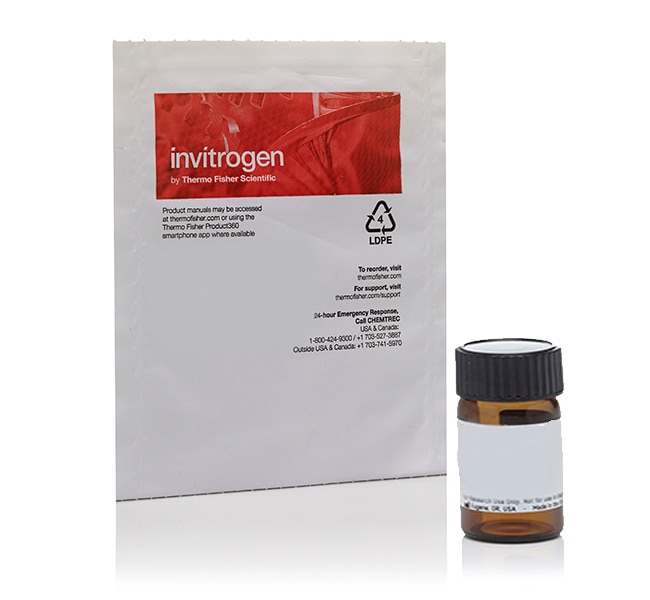I'm labeling live cells with Vybrant DiI or DiD lipophilic cyanine dyes. DiI gives a nice even membrane labeling, but DiD is more "spotty". What can be done?
This is expected. DiD (which is far-red fluorescent) is never as uniform as DiI (which is orange fluorescent). If uniformity is desired, try increasing the label time and concentration, but it still isn't likely to be as uniform as DiI. CellMask Deep Red Plasma Membrane stain is much more uniform and is about the same wavelength as DiD. However, if you intend to do cell tracking over days, CellMask stain has not been tried for that application.
Find additional tips, troubleshooting help, and resources within our Cell Analysis Support Center.
I want to perform a cell fusion assay, where one cell line is labeled with one color and the other cell line with another color, and combine with a nucleic acid stain. What do you recommend?
A typical method is to label one cell line with orange fluorescent DiI C18 and the other cell line with green fluorescent DiO C18. These orange and green lipophilic cyanine dyes will stain the membranes of cells. Cells that fuse will then have both dyes, yielding a yellow color (when images are overlaid or cells are imaged in a dual-bandpass filter). These live cells can then be labeled with Hoechst 33342 (a cell-permeant blue DNA stain comparable in wavelength to DAPI), but only as an endpoint just before imaging (since DNA stains can interrupt DNA function).
Find additional tips, troubleshooting help, and resources within our Cell Analysis Support Center.
I need to look at live cell morphology deformation over the course of a few hours. What sort of membrane dye would be useful for this?
Lipophilic cyanine dyes, such as DiI (Cat. No. D282), DiO (Cat. No. D275), DiD (Cat. No. D7757) or DiR (Cat. No. D12731), are commonly used. The longer the alkyl chain on the dye, the better the retention in lipophilic environments.
Find additional tips, troubleshooting help, and resources within our Cell Analysis Support Center.
Why do I lose all signal from my neuronal tracer when I do a methanol fixation on my cells?
If the tracer you chose is a lipophilic dye and fix with methanol, the lipids are lost with the methanol. If you have to use methanol fixation then choose a tracer that will covalently bind to proteins in the neurons.
Find additional tips, troubleshooting help, and resources within our Cell Analysis Support Center.
I stained my cells with a lipophilic cyanine dye, like DiI, but the signal was lost when I tried to follow up with antibody labeling. Why?
Since these dyes insert into lipid membranes, any disruption of the membranes leads to loss of the dye. This includes permeabilization with detergents like Triton X-100 or organic solvents like methanol. Permeabilization is necessary for intracellular antibody labeling, leading to loss of the dye. Instead, a reactive dye such as CFDA SE should be used to allow for covalent attachment to cellular components, thus providing for better retention upon fixation and permeabilization.
Find additional tips, troubleshooting help, and resources within our Cell Analysis Support Center.



